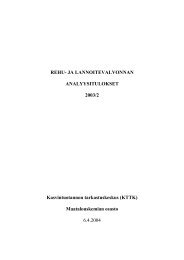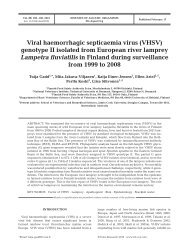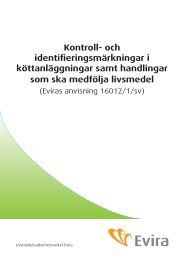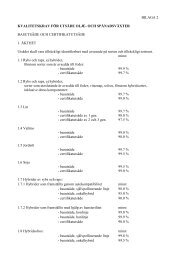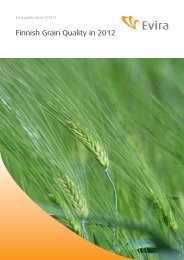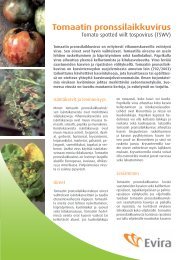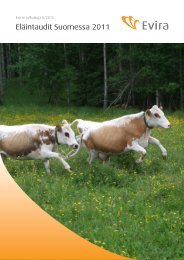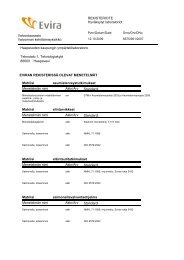Genetic characteristics of field and attenuated rabies viruses ... - Evira
Genetic characteristics of field and attenuated rabies viruses ... - Evira
Genetic characteristics of field and attenuated rabies viruses ... - Evira
You also want an ePaper? Increase the reach of your titles
YUMPU automatically turns print PDFs into web optimized ePapers that Google loves.
Content<br />
List <strong>of</strong> abbreviations ....................................................................................................... 5<br />
Abstract............................................................................................................................ 6<br />
List <strong>of</strong> original publications............................................................................................ 8<br />
1. Literature review........................................................................................................ 9<br />
1.2. Rabies virus <strong>characteristics</strong> ................................................................................ 9<br />
1.2.1. Classification ................................................................................................... 9<br />
1.2.2. Structure <strong>of</strong> virion, genome, <strong>and</strong> proteins <strong>of</strong> <strong>rabies</strong> virus............................... 10<br />
1.3. Virus-host interaction ........................................................................................ 12<br />
1.3.1. Pathogenesis................................................................................................. 12<br />
1.3.2. Clinical signs.................................................................................................. 13<br />
1.3.3. Pathological changes .................................................................................... 15<br />
1.4. Laboratory diagnosis <strong>of</strong> <strong>rabies</strong> .......................................................................... 17<br />
1.4.1. Detection <strong>of</strong> viral antigen ............................................................................... 17<br />
1.4.2. Detection <strong>of</strong> viral genome.............................................................................. 18<br />
1.4.3. Virus isolation ................................................................................................ 19<br />
1.4.4. Detection <strong>of</strong> virus neutralizing antibodies ...................................................... 19<br />
1.5. Rabies epidemiology......................................................................................... 21<br />
1.5.1. Rabies situation world-wide........................................................................... 21<br />
1.5.2. Rabies situation in Europe <strong>and</strong> in Russia ...................................................... 22<br />
1.5.3. Models <strong>of</strong> <strong>rabies</strong> epidemics ........................................................................... 24<br />
1.6. Fixed strains <strong>of</strong> <strong>rabies</strong> virus .............................................................................. 25<br />
1.6.1. Laboratory strains.......................................................................................... 25<br />
1.6.2. Vaccine strains <strong>and</strong> anti-<strong>rabies</strong> vaccines....................................................... 25<br />
1.7. Molecular biology <strong>of</strong> <strong>rabies</strong> <strong>viruses</strong> ................................................................... 30<br />
1.7.1. Antigenic characterization with monoclonal antibodies.................................. 30<br />
1.7.2. <strong>Genetic</strong> characterization <strong>of</strong> <strong>rabies</strong> virus......................................................... 31<br />
1.7.3. Entire genome sequencing <strong>of</strong> vaccine strains ............................................... 33<br />
2. Aims <strong>of</strong> the study .................................................................................................... 35<br />
3. Materials <strong>and</strong> methods............................................................................................ 36<br />
3.1. Field <strong>rabies</strong> virus isolates.................................................................................. 36<br />
3.2. Vaccine <strong>and</strong> laboratory strains.......................................................................... 36<br />
3.3. Cell cultures ...................................................................................................... 36<br />
3.4. Monoclonal antibodies ...................................................................................... 37<br />
3



